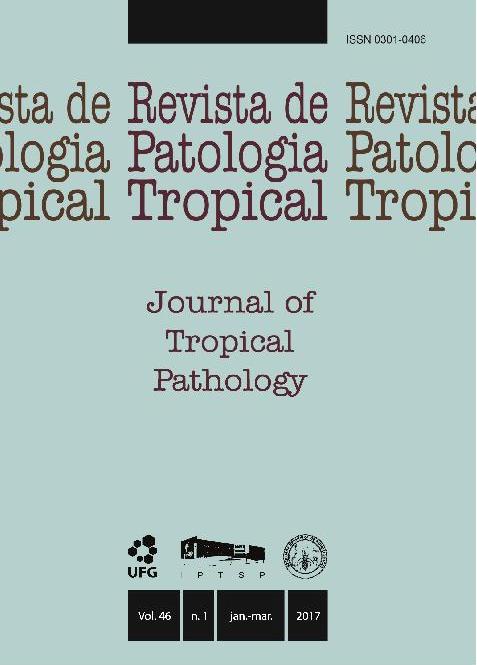ASSOCIATION BETWEEN CLINICAL INDICATIONS AND COPROPARASITOLOGICAL TESTS CARRIED OUT AT THE PEDRO ERNESTO UNIVERSITY HOSPITAL (HUPE/UERJ) IN RIO DE JANEIRO, BRAZIL
DOI:
https://doi.org/10.5216/rpt.v46i1.46295Palavras-chave:
Enteroparasitosis, clinical indications, coproparasitological.Resumo
Enteroparasitosis is a public health problem in Brazil. Clinical indications and the appropriate stool examination are essential to obtain an adequate result. This study aims to evaluate whether the clinical indications and the choice of coproparasitological tests requested by the medical services may influence the diagnosis of enteroparasitosis. The data was obtained from the records in the Laboratory of Parasitology at the Pedro Ernesto University Hospital (HUPE/ UERJ) of the State University of Rio de Janeiro (UERJ) from 2009 to 2014. The qualitative variables were grouped in medical services (medical surgery, infectious and parasitic diseases, gastroenterology, pediatrics and rheumatology); types of tests requested (parasitological stool examination (PSE), merthiolate-iodine-formaldehyde (MIF), and sodium-acetate acetic acidformaldehyde (SAF)) and clinical indications (anemia, diarrhea, abdominal pain, eosinophilia, routine tests, HTLV patients, HIV patients, parasitosis and transplantation research). The chi square (X²) and the Spearman coefficient correlation tests were performed to calculate the association between the clinical indications and the coproparasitological tests. A significant association was evident in the clinical indication: parasitosis found among the MIF tests and Trichrome Wheatley (? = 0.980). In other clinical indications such as anemia, surgery/ transplant, diarrhea, patients with HIV, HTLV and eosinophilia (despite the PSE tests and MIF having presented a strong link (? = 0.802), there was no significant association among the tests. Clinical indications are essential and they have a great influence on the arasitological
diagnosis, requiring a combination of diagnostic methods for the detection of protozoa and helminths of medical interest.
Downloads
Downloads
Publicado
Como Citar
Edição
Seção
Licença
The manuscript submission must be accompanied by a letter signed by all authors stating their full name and email address, confirming that the manuscript or part of it has not been published or is under consideration for publication elsewhere, and agreeing to transfer copyright in all media and formats for Journal of Tropical Pathology.

